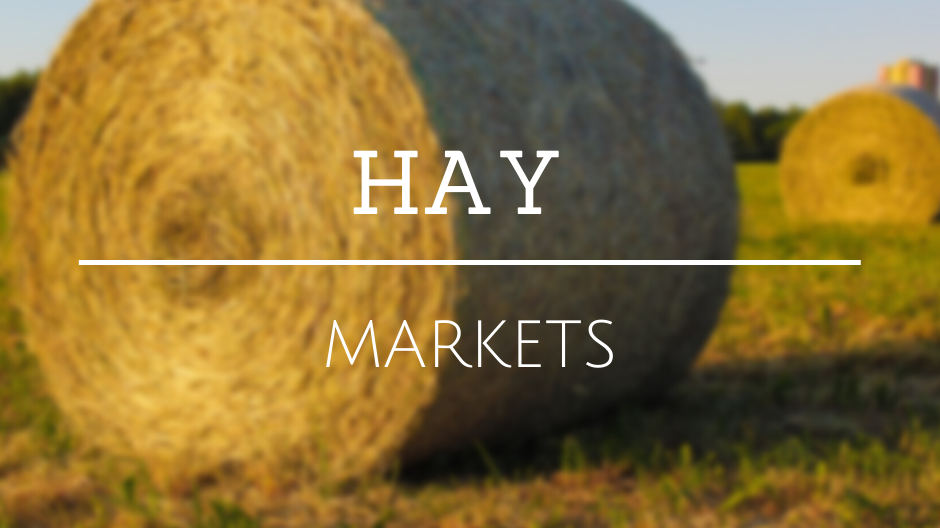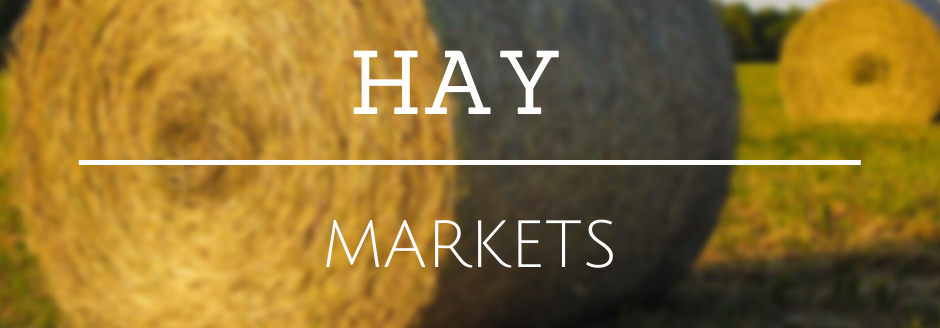Colorado—In the Oct. 26 report, compared to last report, trade activity and demand light. According to the NASS Colorado Crop Progress report for week ending Oct. 22, alfalfa hay fourth cutting harvested is 79% complete.
Missouri—In the Oct. 26 report, compared to last report, hay prices are steady and demand is moderate. Still a few guys that have hay equipment out in the fields as well as a lot of stalks being baled around the state. For the most part moisture was very limited this week. Temperatures are cooling with the first hard freeze of the year likely coming early next week. Feeding season is approaching and livestock farmers continue to move some hay around trying to cover anticipated needs sooner rather than later.
Nebraska—In the Oct. 26 report, compared to last report, alfalfa and grass hay sold mostly steady. Ground and delivered hay sold steady in the Platte Valley. In the west ground and delivered sold steady to $10 lower. Dehydrated pellets sold steady. Demand was light to moderate. Wintery weather on the horizon but overall, the hay market is rather stagnant. Not many are wanting to procure large amounts of hay currently. But, with Mother Nature in control demand could change at the snap of a finger.
Oklahoma—In the Oct. 27 report, compared to the last report, hay trade is slow. With the widespread rain over Oklahoma and the cold weather to follow, the last cutting of hay for the year has likely been made. There is a larger inventory of hay compared to the past two years, which is the cause of slow trades. Most of the hay producer trades are from clients they have had over the years.
Texas—In the Oct. 20 report, compared to the last report, hay prices are mostly steady to firm across the majority of the regions with quality and freight being the largest determinants on price. Buyer demand remains good as rain has been limited and pastures continue to deteriorate. However, buyers are facing another year of high feed costs due to continued drought in the regions so they are trying to find alternative feed sources to cheapen up there feed bills. As a result, a lot of silage has been put up in the Panhandle to help supplement forage needs. Next report will be released Nov. 3.
South Dakota—In the Oct. 27 report, compared to last report, alfalfa hay steady. Moderate demand for alfalfa, good demand for high quality grass to start calves on feed with. Dairy operators have been resistant to current alfalfa prices. Moderate demand for corn stalks. Wet weather starting at midweek halted corn harvest and baling of corn stalks, more widespread snow by the weekend. Below average temps for this week and next week.
New Mexico—In the Oct. 27 report, compared to last report, alfalfa hay steady. Trade active, demand good. The the state is 48% complete with fifth cutting, 21% with sixth cutting. According to New Mexico Crop Progress report as of Oct. 22, hay and roughage supplies continued to deteriorate, and were observed to be 34% very short, 47% short, 18% adequate, and 1% surplus. Stock water supplies were 24% very short, 49% short, and 27% adequate, also a decline from the previous week.
Wyoming—In the Oct. 26 report, compared to last report, all reported hay sales sold steady. Demand was light to moderate. Colder temps prevail in the western parts of the state with some areas getting snow even at lower elevations. Some beets are out of the ground with some producers afraid the beets might get frozen in the ground as the temps are to plummet into single digits the next few nights. Some alfalfa producers have either third or fourth cutting on the ground and are waiting for warmer days and for the snow to melt off before baling.
Montana—In the Oct. 27 report, compared to last report, hay sold generally steady. Hay sales were light again this week. Demand for hay to remain in state is light, while demand for hay to ship out of state is mostly moderate. Some producers were able to get their third cutting put up before the snow fell early in the week, while others will have to wait until the snow melts and dries to finish putting up third cutting. Canadian buyers continue to absorb some of the excess hay on the market, however not as many loads were destined to Canada as have been in weeks past. Many producers continue to have excess loads of rained on or very mature hay. This class of hay is proving to be a hard sell as many small producers and ranchers put up hay for themselves and are showing little to no interest for this class. Demand for straw is moderate. Heavy straw supplies continue to be seen.

